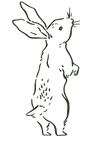

Non-Animal Methods
in Research
Alternatives to Animal Testing
Replacing animal testing does not mean putting human patients at risk or halting research progress. Due to technological innovations in science, animal tests are now slowly being replaced in a reas such as toxicity testing, neuroscience and drug development.
Animal testing often still persists due to conservatism within the scientific world. It is simply more comfortable to do what has always been done and it is easier to compare animal results to earlier animal tests.
An even once reliable alternatives have been developed, bureaucratic hurdles can massively delay their implementation and enforcement of use.
Types of Alternatives
Cell Cultures & Tissue Engineering
Almost every type of human and animal cell can be grown in the laboratory.
Essentially, cell culture involves the distribution of cells in an artificial environment (in vitro) which is composed of the necessary nutrients, ideal temperature, gases, pH and humidity to allow the cells to grow and proliferate.
Such cell cultures have been used to create 3D cell chips, called "organ-on-a-chip" (OOC), that stimulate the activities and mechanics of entire organs and systems. This novel model of in vitro multicellular human organisms, permits the study of human physiology in organ-specific contexts, without the use of animals. Devices have already been produced that accurately mimic the lung, heart, kidney and intestine.
Cell cultures have already been key to developments in areas such as cancers, kidney disease and AIDS and are currently routinely used in chemical safety testing, vaccine production and drug development.

All Videos
The biggest applications for engineered tissues are in research and development, and in medicine. Key applications of tissue engineering include testing of cosmetics and other consumer goods, drug screening, personalized medicine, regenerative medicine, cell-based biosensors, food and other animal products and aesthetics.
Computer Models and Database Analysis
The growing sophistication of computers and software have introduced innovative methods to study human physiology and algorithms that can replace standard toxicology tests on animals.
The ability to replicate or "model" aspects of the human body is ever more possible. Computer models of the heart, lungs, kidneys, skin, digestive and musculoskeletal systems already exist which can be used to conduct virtual experiments based on existing information and mathematical data.
On the other hand, advanced algorithms working from large chemical databases can accurately predict a new chemical's toxicity. Creating large "libraries" of known chemicals can map the relationships between chemical structures and toxic properties. These maps can then be used to automatically predict toxic properties of any chemical compound, even more accurately than a single animal test.
